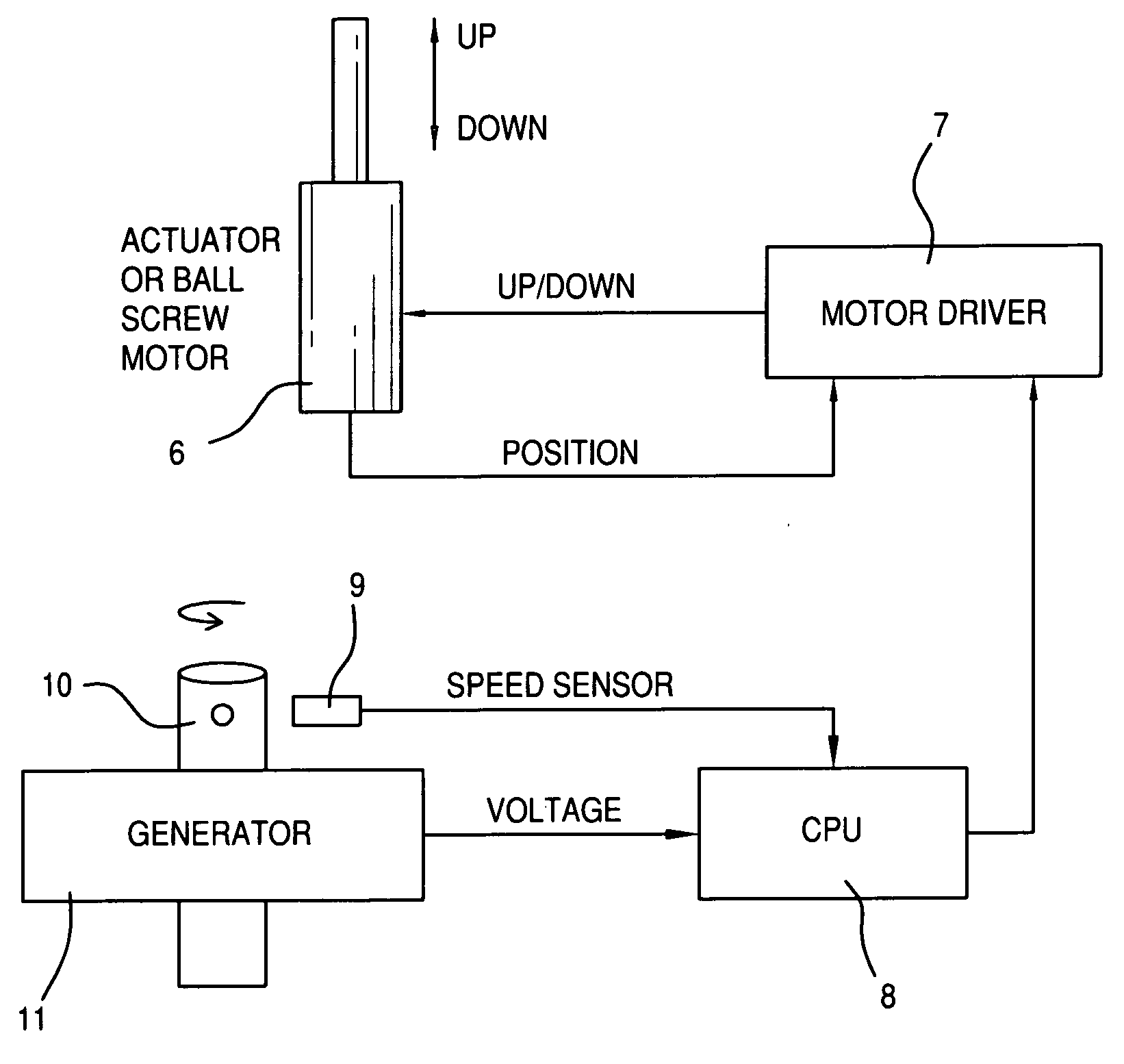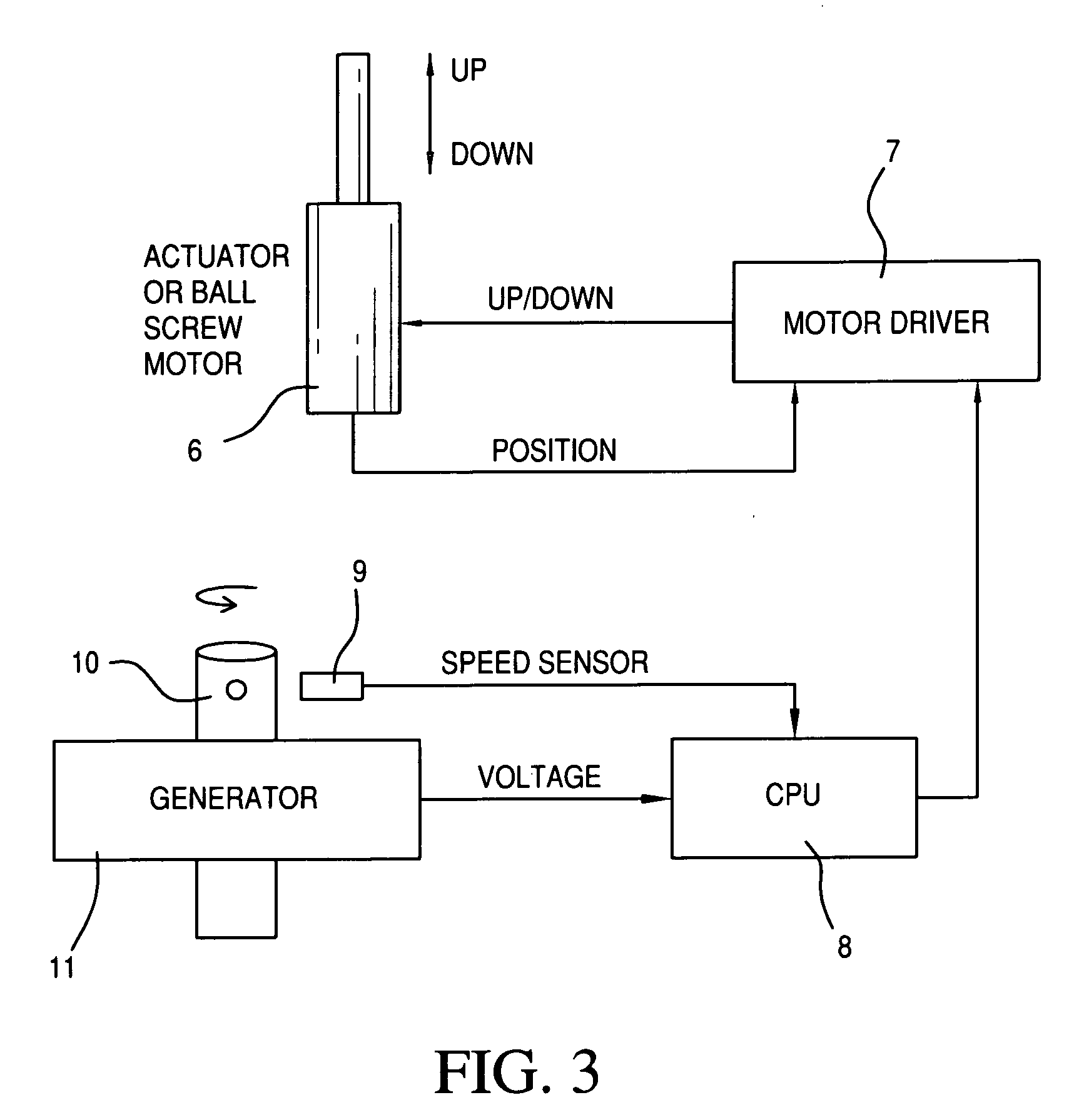Retractable wind turbines
a wind turbine and rotor technology, applied in the direction of rotors, sustainable manufacturing/processing, greenhouse gas reduction, etc., can solve the problems that wind turbines cannot typically handle the stresses induced, loss of production, etc., and achieve the effect of reducing noise, maximizing portability, and improving efficiency
- Summary
- Abstract
- Description
- Claims
- Application Information
AI Technical Summary
Benefits of technology
Problems solved by technology
Method used
Image
Examples
Embodiment Construction
[0041]FIG. 1 shows one embodiment of this invention. In this embodiment a VAWT is built from blades comprised of segments 1 and with wing tips 2. The blades are attached by a bracket 3 that envelopes an actuator 4 that slides on the central shaft 5. The actuator moves to extend or retract the bracket depending upon wind conditions and is controlled by a torque sensor on the main shaft in a feedback loop described in FIG. 3. This type of system can also be used for VAWTs with single piece blades or without wingtips or with a different number of total blades. FIG. 2 shows the turbine during a high wind state as the actuator 4 has moved down the central shaft 5 causing the hinges on the bracket 3 to retract the blades. This retracted position protects the turbine from damage at high wind speeds yet enables it to continue spinning and supplying the generator with energy. Most wind turbines cannot operate at high wind speeds due to centrifugal forces that are damaging to the mechanical s...
PUM
 Login to View More
Login to View More Abstract
Description
Claims
Application Information
 Login to View More
Login to View More - R&D
- Intellectual Property
- Life Sciences
- Materials
- Tech Scout
- Unparalleled Data Quality
- Higher Quality Content
- 60% Fewer Hallucinations
Browse by: Latest US Patents, China's latest patents, Technical Efficacy Thesaurus, Application Domain, Technology Topic, Popular Technical Reports.
© 2025 PatSnap. All rights reserved.Legal|Privacy policy|Modern Slavery Act Transparency Statement|Sitemap|About US| Contact US: help@patsnap.com



